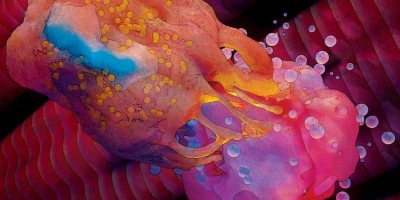Passive stiffness measurements in heart samples of a ‘titin-cleavage’ mouse model reveal the elastic and viscous force contributions of individual myocardial components. Titin is the principal contributor to elastic forces, whereas the microtubules and titin, followed by actin, dominate the viscous force contributions; the extracellular matrix contributes at high strain.

References
Linke, W. A. & Hamdani, N. Gigantic business: titin properties and function through thick and thin. Circ. Res. 114, 1052–1068 (2014). A review that recapitulates the diverse roles of titin in the heart, including the contribution of titin to myocardial passive stiffness.
Granzier, H. L. & Irving, T. C. Passive tension in cardiac muscle: contribution of collagen, titin, microtubules, and intermediate filaments. Biophys. J. 68, 1027–1044 (1995). This paper uses chemical dissection of the various mechanically active components of rodent myocardium to determine their respective contributions to passive stiffness.
Caporizzo, M. A. & Prosser, B. L. The microtubule cytoskeleton in cardiac mechanics and heart failure. Nat. Rev. Cardiol. 19, 364–378 (2022). A review that presents a current overview of the mechanical role of microtubules in healthy and failing hearts.
Rivas-Pardo, J. A. et al. HaloTag-TEV genetic cassette for mechanical phenotyping of native proteins. Nat Commun. 11, 2060 (2020). This paper introduces the genetic mouse model that enables specific cleavage of elastic titin in striated muscle.
Fomin, A. et al. Truncated titin proteins and titin haploinsufficiency are targets for functional recovery in human cardiomyopathy due to TTN mutations. Sci. Transl. Med. 13, eabd3079 (2021). This paper reports on the pathomechanisms of titin-truncation cardiomyopathy and demonstrates the presence of truncated titin proteins in patient hearts.
Additional information
Publisher’s note Springer Nature remains neutral with regard to jurisdictional claims in published maps and institutional affiliations.
This is a summary of: Loescher, C. M. et al. Titin governs myocardial passive stiffness with major support from microtubules and actin and the extracellular matrix. Nat. Cardiovasc. Res. https://doi.org/10.1038/s44161-023-00348-1 (2023).
Rights and permissions
About this article
Cite this article
A ‘musical chairs’ approach to untangle the sources of myocardial passive stiffness. Nat Cardiovasc Res 2, 968–969 (2023). https://doi.org/10.1038/s44161-023-00349-0
Published:
Issue Date:
DOI: https://doi.org/10.1038/s44161-023-00349-0
- Springer Nature Limited


